EBOOK
How to Increase Average Order Value
Published: Mar 12, 2018
What you’ll get from this guide
Driving conversions is a top priority – and it’s easy to see why. Considering that over a third of marketers are unhappy with their conversion rates, it’s understandable that you’d be putting lots energy and focus into getting traffic to your site and encouraging it to convert.
But while getting customers to convert on your website needs to be your baseline measure of success, if you can also encourage them to spend more during their visit, you can dramatically increase your revenues without having to spend a cent more on acquisition.
What this comes down to is unlocking the true value in every customer – and this deserves your focus just as much as driving the sale. As founder of e-commerce agency Trellis Isaiah Bollinger puts it:
“Theoretically, doubling average order value is just as valuable as doubling conversion rate in terms of revenue.”
Average order value (AOV) – which you can work out by dividing your total sales revenue by the number of orders placed – gives you a meaningful indication of what customers are prepared to spend with you in a given session.
Consumers are spending more than ever online: the past five years have seen a significant rise in e-commerce order values, with US shoppers placing 13.9% higher value orders now. With shoppers increasingly willing to spend more online, there’s now a clear opportunity to optimize your website for customer spending.
But to improve order value effectively, you’ll need to understand what motivates shoppers to spend more in the first place, and get to grips with the right tactics that tap into these motivations.
That in mind, we’ve put together this guide to help you strategize your approach to boosting order value. In it, you’ll find:
- what motivates shoppers to spend more online
- top tactics for boosting average order value
- best practice examples from your industry
What makes customers spend more online
What motivates us to spend more?
We might consider Dave Caffey’s 6 Cs of customer motivation:
- Choice – empowering customers with relevant options
- Customization – giving customers freedom to personalize their purchase
- Cost reduction – appealing to customer desire for monetary value
- Convenience – removing any difficulties for the customer
- Content – engaging customers with compelling text and imagery
- Community – increasing purchase intent by showing the behavior of others
If these motivators explain why customers spend more online, how can you use these drivers in practice to influence what customers leave your store with? Let’s look at each motivator in more detail and spotlight applicable tactics that you can use to leverage each one.
1. Choice
Providing your customers with a choice can have a big impact on how much they intend to spend. And while too much choice risks analysis paralysis, presenting relevant options can give customers inspiration for what else to add to their cart or booking.
Cross-selling
Cross-selling is the act of promoting and selling other items that might also be of interest to your customer. This could be something that will complement the item already in their cart (for example, an extension cord to use with their electric drill) or simply an item that may also be of interest to them based on where or what they are browsing in your online store.
Whilst looking at a slow cooker on kitchenware retailer Lakeland’s website, customers are recommended a cookbook specifically dedicated to recipes for slow-cookers.

It’s a simple choice, but for customers looking to make the most of their new slow cooker, a recipe book is a helpful suggestion that adds value for the customer, and ideally to their cart. Yieldify worked with sports nutrition retailer Science in Sport to increase website conversions using a similar approach. By triggering a subtle Notification in the corner of the screen suggesting other products related to those they had already added to their cart, Science in Sport made it easy for customers to add them with one click.

2. Customization
By giving customers the freedom to personalize their purchases, you can enhance their sense of ownership to justify a higher spend. For example, you might give customers the option to add an engraving to a watch and visualize mockups on the web page, or personalize their room-service breakfast when booking an overnight stay.
Upselling
Upselling is persuading customers to increase the value of the item under consideration. A common way to encourage this is by letting customers customize the product that they’ve already shown intent to purchase. Take, for example, this deal offered by pizza delivery service Firezza:

Firezza understands that perceived quality and authenticity is at the heart of its appeal to customers. By offering premium buffalo mozzarella as an extra for a small additional cost, Firezza is able to leverage its brand value to increase the order value.
3. Cost reduction
Yes, it may sound counter-intuitive, but you can drive a higher spend by showcasing cut-price or lower-priced products. Doing this can tap into customers’ motivation to buy more of a discounted item or add reduced items to their existing order.
Deal thresholds
A great way to encourage a higher order value is to highlight promotions that only take effect once a certain spend threshold has been reached. You can make customers aware of offers like these by highlighting how much more they’d need to spend to qualify for a promotion.
You might, for example, show a customer how much they’d need to spend to become eligible for free delivery. UK greeting card retailer Scribbler shows deal thresholds to boost sales and order value on its website:
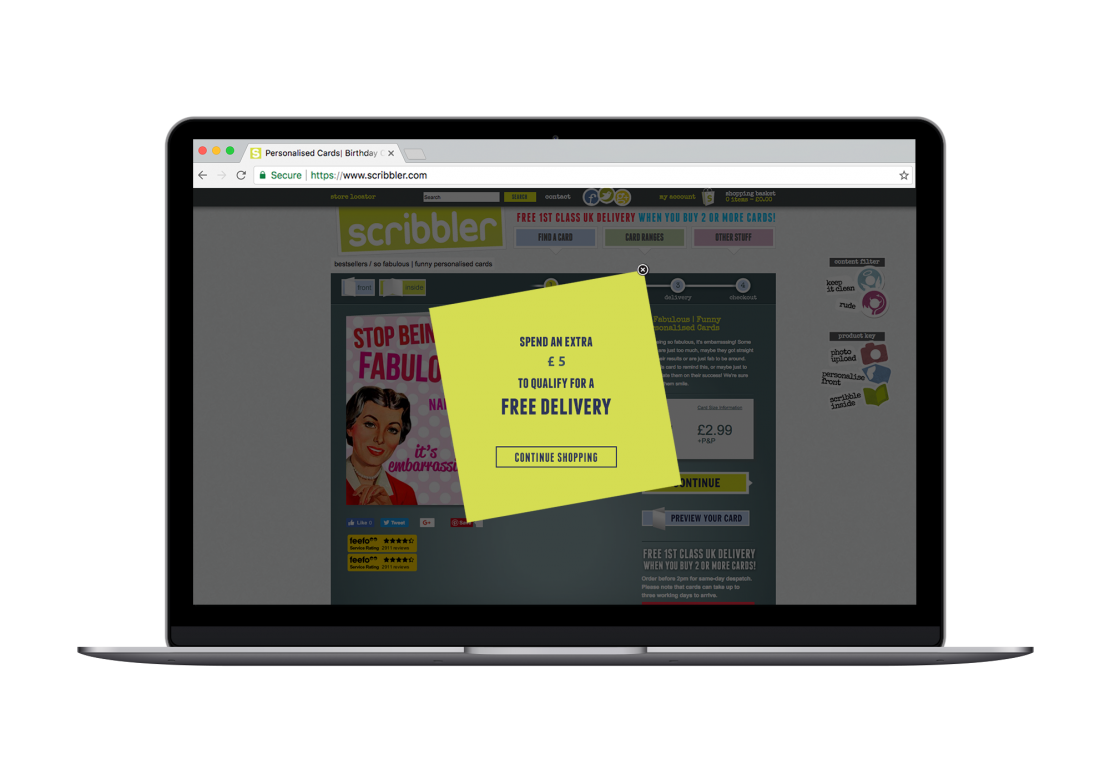
When customers showed intent to exit the Scribbler website with less than £5 worth of products in their cart, Yieldify shows them a message offering free delivery on orders over £5. Using a Dynamic Promotion, the message customers see changes dynamically to show how much they still need to spend. The campaign achieved an uplift in the conversion rate of 73.8%, and increased average order value by 4.2%.
This same tactic is used effectively by cosmetics retailer Kiehl’s on its Spanish web store. Kiehl’s targets customers with a cart value between €75 and €89 and offers them 2 XXL free samples and three sachets if they spend over €90:
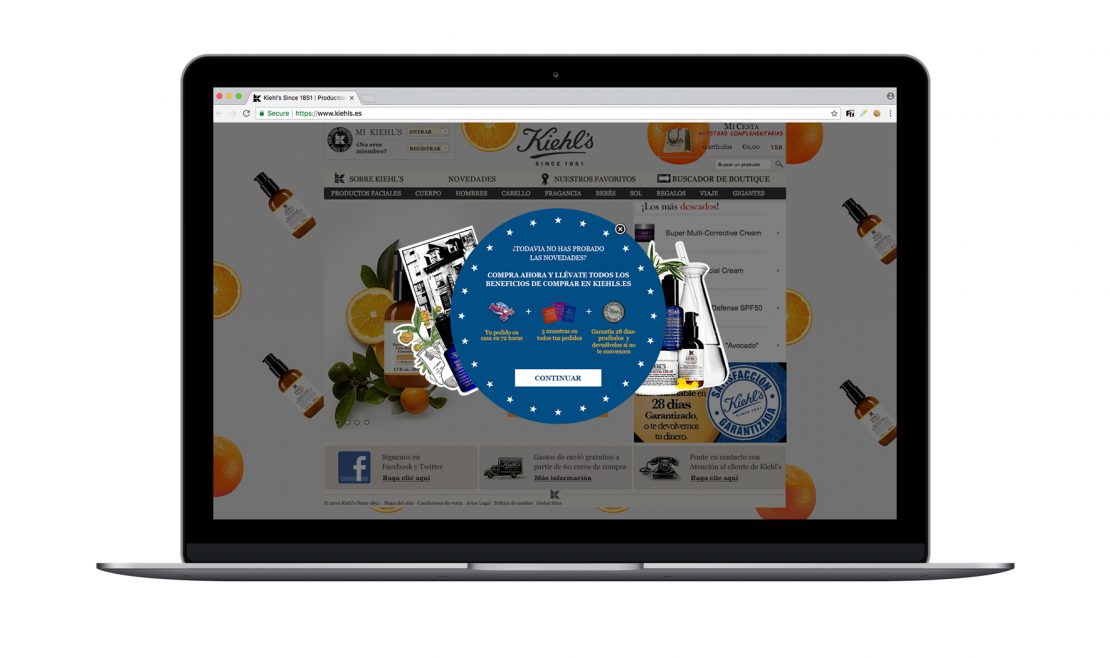
Customers that checked out after engaging with this campaign did so with a 4.2% higher order value.
To give another example, pet food store Happy Dog combines a Dynamic Promotion with a progress bar to visualize how much more a customer would need to spend to get free delivery.
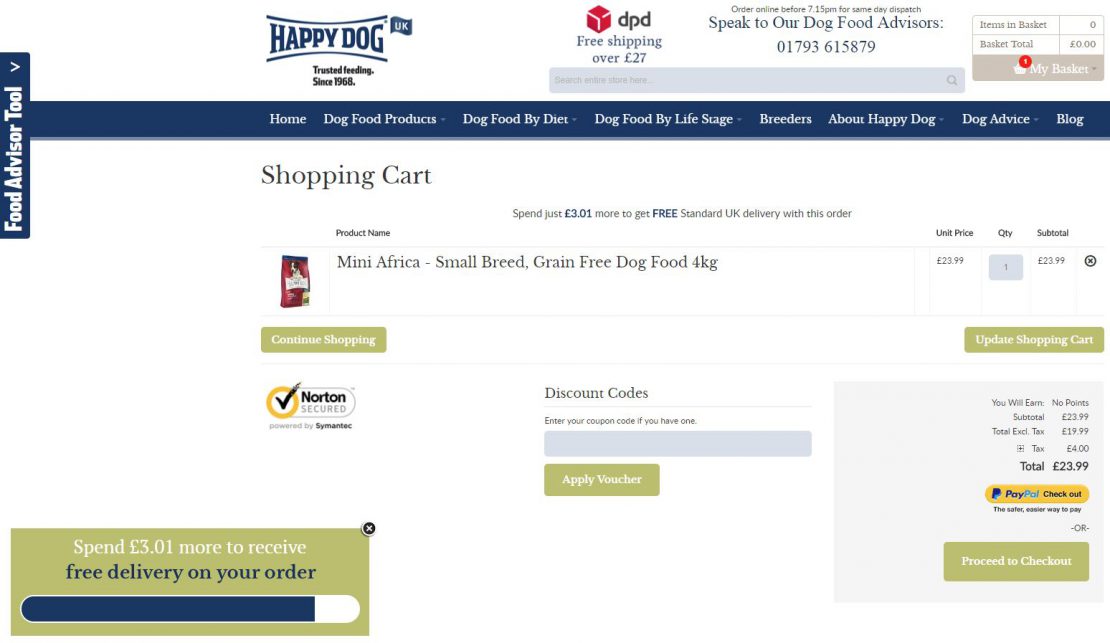
Considering that 24% of shoppers abandon the checkout because they can’t calculate order value in advance, using this kind of tactic you can show customers the benefits of checking out with a higher order value to keep them on track to conversion.
Bulk buying and bundling
By allowing customers to save money when they buy multiple products, you can encourage them to spend more. Tactics that encourage customers to bulk-buy or bundle products might show reduced costs to convince them that they’re getting the best deal. US retailer Bloomingdales gives customers the opportunity to bulk-buy three packs of socks at a discount:

Often websites will combine bulk-buying with cross-selling to offer bundles. Bundling works in the same way as bulk-buying, but also allows customers to combine related items.
For example, PC World bundles new printer purchases with other printing essentials such as paper and ink, providing a stock ‘recommended bundle’ to appeal to customer convenience. In addition, the website appeals to customer choice by providing a further option to ‘create your own bundle’. This provides the customer with a selection of popular options that can be added to a deal that fits just them.

You can also upsell before a customer has even chosen the product they want to buy. ‘Price anchoring’ is where you place similar products at different prices next to one another to highlight the value on offer. Evans Cycles uses this on its website:

The first bike shown here is the most expensive, and has been placed next to the cheapest of the three. This helps highlight to the customer the value of the £260 bike. The third item is more expensive again, but still cheaper than the first item. As a result of this placement, the £326 bike might appeal to the customer as a good compromize between the two prices of the other bikes. The two more expensive bikes are also shown to be on sale – and accompanied by reviews and star ratings that use community and social proof to further incentivize the customer (read on to hear more about these tactics).
4. Convenience
If you give customers the option to make their lives easier, they’ll seriously consider paying more for it. In fact, according to research conducted by Slice, convenience is the number one reason people shop online, with 38% of respondents citing convenience ahead of price (31%) and selection (29%). Ways you might appeal to this motivation might be reassuring customers when considering a bigger order that you operate a free returns policy – or allowing those booking flights to make their trip more comfortable by offering extra leg room.
Financing options
Offering financing options can make it more convenient for a customer to commit to a purchase today in exchange for a higher order value. To return to Evans Cycles, while the brand highlights the appeal of the two cheaper bikes, it also makes the highest ticket item option more appealing by including a financing option.

The customer is given the choice of purchasing the bike in one payment, or splitting it into monthly instalments of £13.56. For companies selling high-value products, this is a great way to secure a purchase whilst also helping customers get what they might not otherwise be able to afford up-front.

What’s more, the customer can also choose a low-cost financing plan that stretches payments over several years which means in exchange for this convenience, the brand also achieves a higher order value in the long-run.
5. Content
In short, stories sell – and if you use text and imagery to create compelling narratives about your products and why they should be purchased now, then you can increase the chances that a customer will commit to a higher value purchase.
Animation
Content that comes to life on the page can inspire the sense of urgency to purchase. Urgency tactics are great for driving conversions, but they can also affect order value.
That’s what Swedish furniture retailer Rum21 found using Yieldify to highlight its Cyber Week promotions. The campaign showed an overlay to abandoning customers to encourage them to stay and take advantage of Cyber Week promotions while they were still in play.
The campaign also showed an animated countdown clock to inspire a sense of urgency, motivating customers to purchase within the given timeframe. By re-engaging abandoning customers, the campaign’s urgency tactics not only drove +35.9% conversion rate uplift but also a +19% increase in average order value.
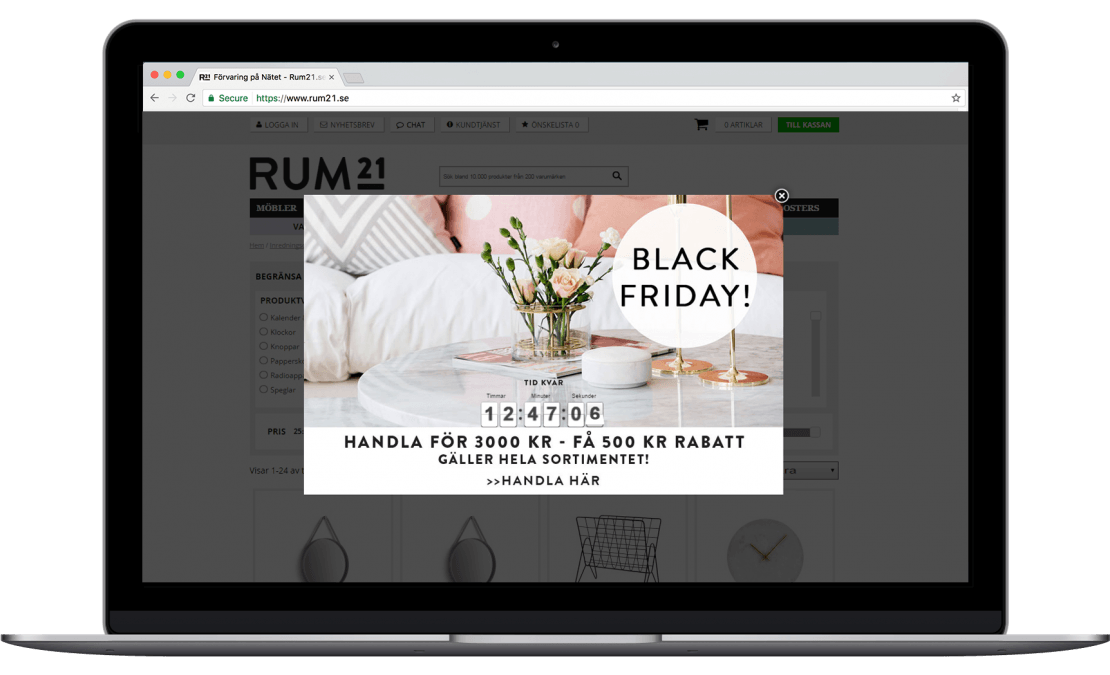
Video
Considering that 43% of people want to see more video content from marketers, relevant video content shown at key moments in the customer journey can be just the thing to increase order size.
French teleshopping network M6 Boutique used video content delivered by a subtle Notification to engage its website customers with its core brand value without interrupting the customer journey. This campaign helped contribute to a +10% increase in average order value.
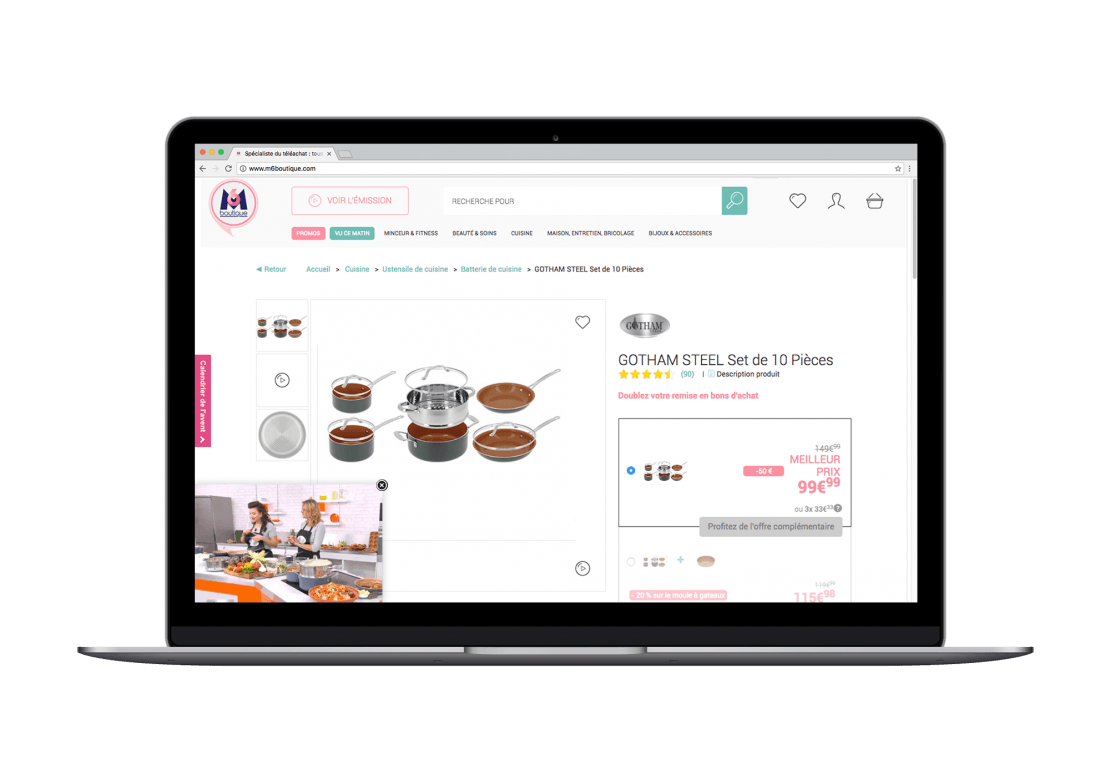
6. Community
The behavior of the crowd can play a big role in influencing why we buy more. Customers feel a ‘fear of missing out’ (FOMO) when they see the purchase behaviors of others and this can nudge them to follow similar purchase behaviors. To create FOMO, you might show a Trustpilot rating, customer reviews or even the number of customers showing interest in the same product to prompt customers to up their cart value.
Cross-sell with social proof
Social proof is a highly effective way to drive conversions by giving examples of what other customers are doing. Highlighting to customers that others have shown interest in the item they’re currently considering can be all it takes to encourage them to buy the same thing for themselves.
Fashion retailer Monki uses social proof to support the cross-selling of other items. Monki includes a section below each product page that shows the customer what ‘Others also bought’ when they purchased the item being looked at – which is a great way of utilising social proof to highlight cross-selling opportunities.
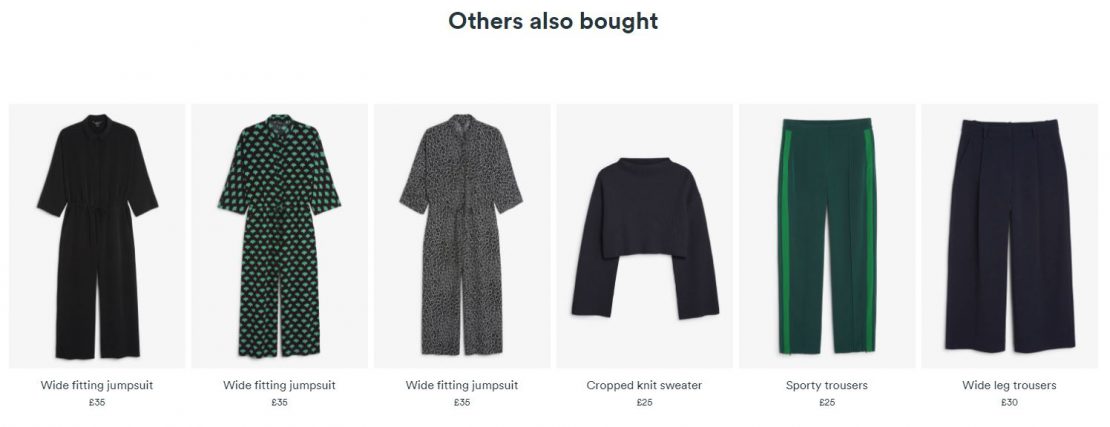
Best practice examples from your industry
Market leaders use a range of different order value-boosting tactics in combination to compel customers to make higher-value purchases. Let’s take a look at some best practice examples of how you can use multiple tactics in the wild:
Retail
There are plenty of ways that retailers can boost order value – and we’ve already seen a few above.
ASOS uses its own photos for a product as inspiration to cross-sell further items of clothing. Below we can see how it recommends other clothes worn by the model in its photograph of a denim jacket. This simple idea helps customers recreate the whole look themselves:

ASOS also uses a number of other incentives to encourage additional sales here. Price anchoring has been used to highlight the value of the different items, and sale reductions on the baseball cap and t-shirt give the customer more reasons to buy the products. Whilst the t-shirt is shown to be out of stock, this itself can create a sense of FOMO and urgency to purchase, motivating customers looking to buy the other products now in case they also sell out.

Travel
The travel industry increasingly relies on upselling ancillaries – according to a survey by Cartrawler, as much as 46% of sales by the top ten airlines are generated through non-ticket retailing. Looking at Ryanair’s website, it’s easy to see why this is the case:

The flight from London to Rome is listed at £21.99 – but Ryanair uses a range of upselling tactics to encourage customers to opt for the higher price packages. Note that its two premium options ‘Plus’ and ‘Flexi Plus’ include a number of extras such as extra luggage allowances, the ability to reserve your seat in advance, and the ability to avoid queues in the airport.
It’s entirely possible to book a ticket without any of these ancillaries, but each option offers a different way to improve the quality of your journey. Indeed, if you choose the lowest price option, on the next page in the booking funnel you can then pick and choose specific options that might matter most to you.
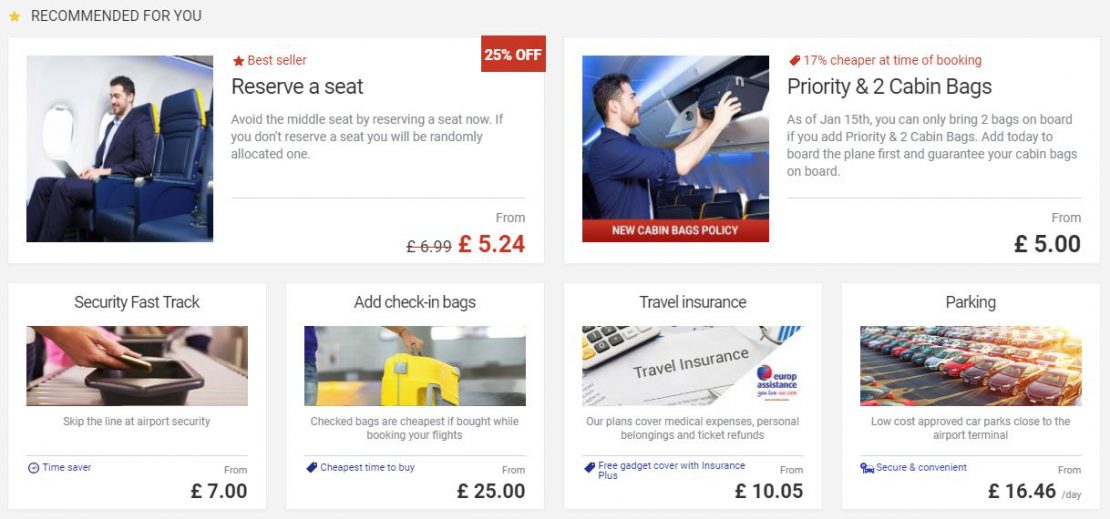
Alongside overall packages ‘Plus’ and ‘Flexi Plus’, there are also opportunities to purchase travel insurance for your trip, and parking at the airport. Ryanair also offers solutions for car rental and even accommodation once the customer has touched down in Rome, as well as discounted prices on transfers from the airport into the city.
All of these options create opportunities to increase the order value by giving customers choice and making it convenient for them to book everything in one place. A user logging on to buy a single flight might very easily be able to book their whole holiday door to door, based entirely on the suggestion offered up by the Ryanair website booking funnel!
Gaming and betting
Promotions should be at the core of any efforts to improve order value in the e-gaming industry. Customers are more likely to place larger deposits if they can see clear benefits from their doing so. This might be because promotions offer them greater security (a guarantee of a certain amount of a gambling loss being paid back to the customer if a spending threshold is met) or higher rewards for investing more money in a bet.
Bethard offers this promotion to increase the winnings of their customers:

Here, customers are given a boost to their winnings if they choose to place an accumulator bet – a bet that requires a number of different bets to be won in order to claim the total prize. If a customer places an accumulator bet that requires five different conditions to win, Bethard offers a prize boost of 7%. Depending on how many conditions there are to the combination bet, the prize boost might be as much as 30% more.
This particular promotion encourages the customer to make increasingly challenging bets in order to benefit the most from the potential rewards. This is highlighted by the provocative copy on the website, using the tagline ‘Winners dare more’. This content – and the similar messages pushed across the website – use FOMO to encourage the customer to commit to a high-value deposit.
Bethard also used Yieldify to drive higher-value deposits. By offering a special incentive of €10 free credit for first-time registrants who used Trustly to make a deposit, Bethard increased registrations and deposits, without impacting on its own bottom line.
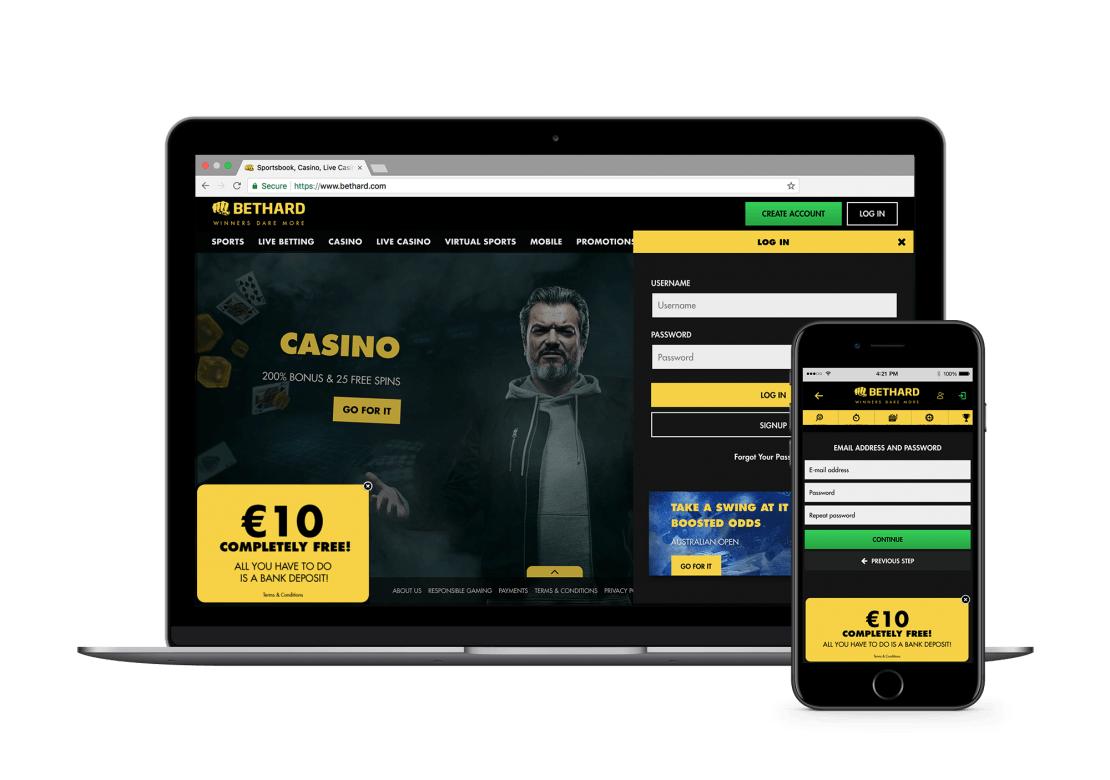
This appeared as a Notification on a timer, automatically applying the incentive to the menu options for every user who saw the message.
Ticketing
Upsell tactics are particularly effective at increasing order values in the ticketing industry. Festival operators use this tactic frequently – customers will usually start by looking at tickets for the event itself, and then add extra products and offers to enhance their planned festival experience.
Award-winning festival operator We Are FSTVL uses a number of tactics. Alongside the standard festival tickets, which are available both for individual days and for the entire weekend, there are a number of upselling options on the site.
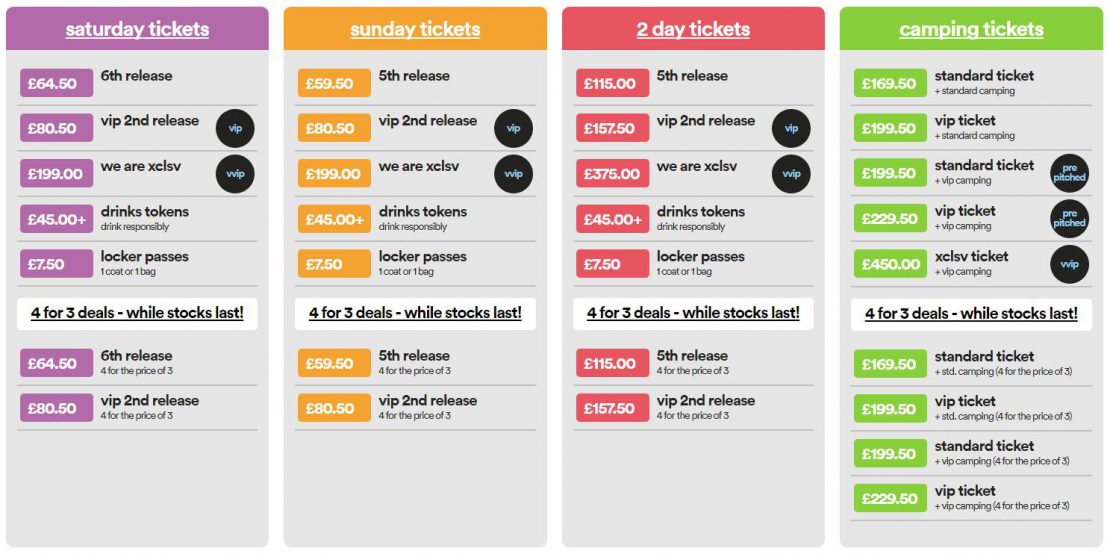
The festival offers two different VIP packages, each with bonus entertainment unavailable on the standard festival ticket. The festival also offers travel options, security for customers’ belongings and camping upgrades.
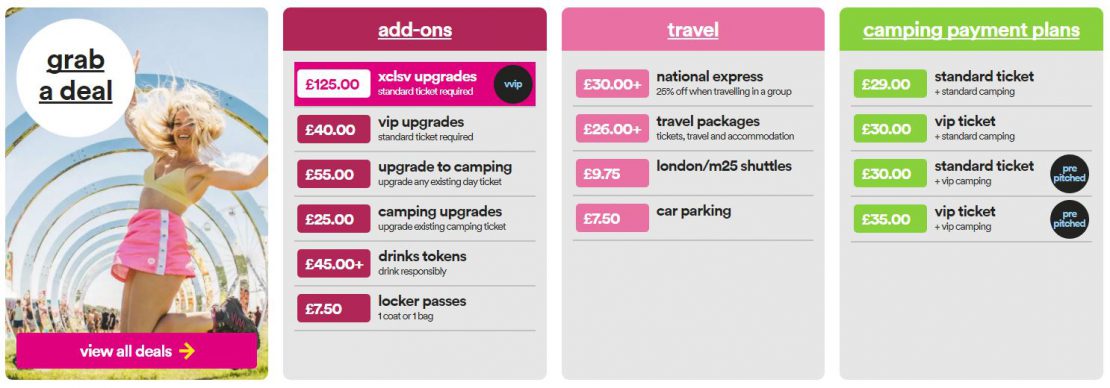
We Are FSTVL also operates a drinks token scheme, in which customers buy tokens to exchange for drinks, which cuts down on queues at the bars onsite. Its website offers advance purchase of these tokens at a discount, which encourages users to buy them at the same time as their ticket, and leaves customers with the knowledge that everything is bought and dealt with, leaving them free to get excited about the festival.
To further emphasize this upsell opportunity, We Are FSTVL used Yieldify to target abandoning visitors with an overlay that highlights this offer:
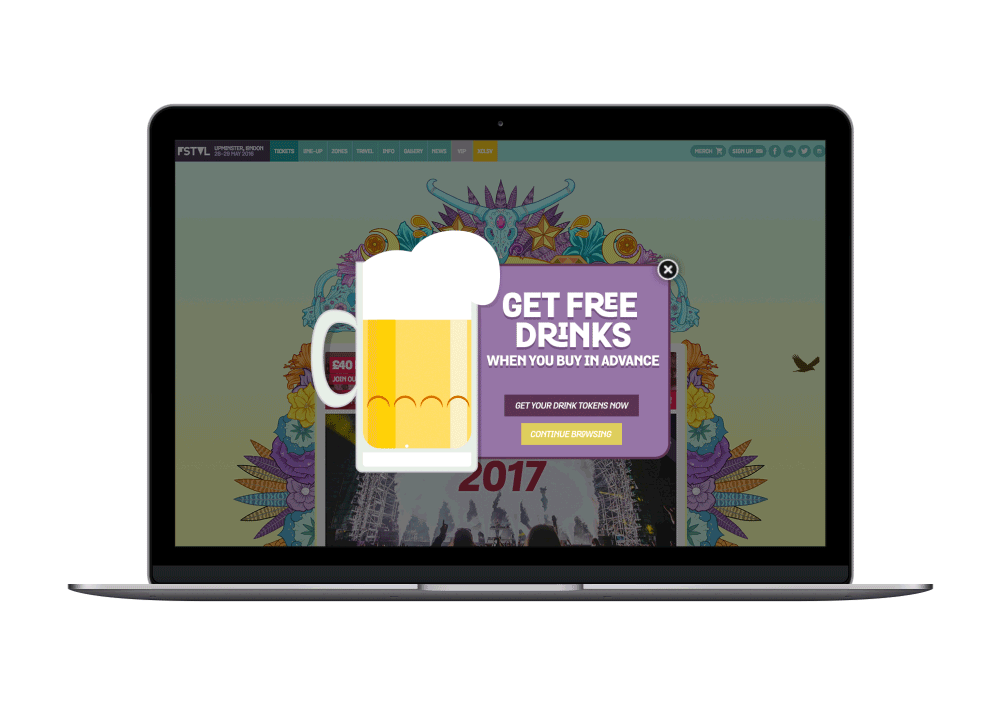
By offering a reward to customers who thought ahead and purchased drinks tokens in advance, We Are FSTVL was able to appeal to their desire for convenience, encouraging a higher order value.
Conclusion
Great customer journeys don’t just drive conversions: they also allow you to realize the value of every customer visiting your website. Having considered the psychology behind why people buy and taken a detailed look at the tactics that speak to customer motivations, you’re now ready to start driving higher order values.
To kickstart your planning, bear in mind these takeaways:
- Remember the 6 Cs of customer motivation – and available tactics that help you tap into them. Are you implementing tactics that speak to each one?
- Combine a variety of onsite tactics to encourage higher order values to ensure you’re engaging customers on several fronts. Are you using multiple tactics to influence purchases?
- Reach for technology that lets you deliver experiences that can help you achieve better AOV. Do you have in place the right tools to encourage spending?